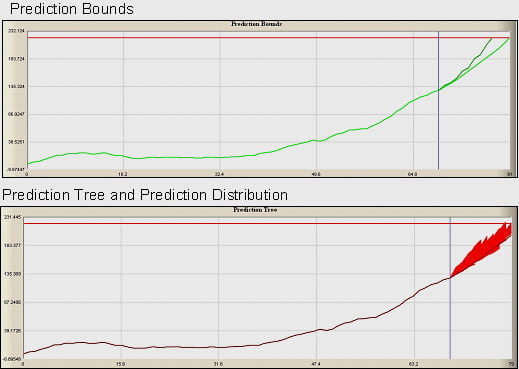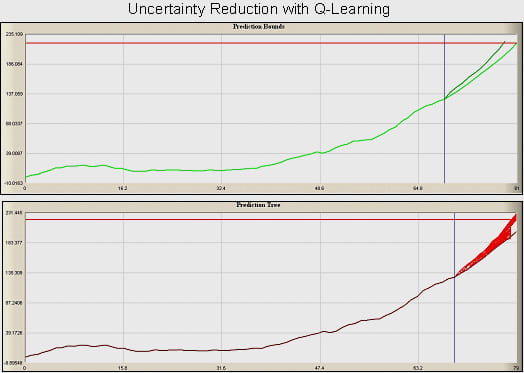The objective of this research is to improve upon current long-term prediction approaches by introducing an integrating architecture that quantizes and manages the aforementioned uncertainty and also allows an intelligent integration of multiple parallel prediction schemes resulting in better predictions with high degree of confidence.
Prognosis Architecture
Important aspects of this comprehensive architecture are the following
|-
- Optimal noise removal and data preprocessing
- Representative feature extraction
- Uncertainty Representation and Prognosis
- Prognosis Evidence Integration
- Uncertainty management through Reinforcement Learning
Confidence Prediction Neural Network(CPNN)
The prognosis scheme presently uses a Confidence Prediction Neural Network (CPNN) which generates a tree like structure for multi-step prediction. The CPNN construct is motivated by Specht’s General Regression Neural Network (GRNN) and the Probabilistic Neural Network (PNN); universal approximators for smooth functions. The CPNN is essentially a lazy learning technique that estimates the Confidence Distribution f(X,y) for next step prediction. A general outline of the scheme is presented in the figure below.
The CPNN extends the ideas of single step prediction to multi-step prediction using a dynamically evolving neural tree. Confidence bounds for prediction are then estimated as the widest branches of the tree.
Test Results: Prognosis of s Faulty Planetary Gear Plate
A crack in the planetary carrier of a UH-60 Blackhawk main transmission has received recently extensive evaluation through analysis of vibration data [5]. The rotorcraft main transmission includes a planetary gear train comprising an inner “sun” gear surrounded by five rotating “planets”. Torque is transmitted through the sun gear to the planets, which ride on a planetary carrier. The planetary carrier plate, in turn, transmits torque to the main rotor shaft and blades. The cracked planetary gear plate used for this analysis is shown below
The analysis approach consists of selection and extraction of appropriate features from vibration data indicative of the fault condition and the construction of an optimum feature vector. The time correlated features are used as input to the prognostics module. One such feature, extracted from frequency domain harmonic analysis, evaluated at each time step is shown in the following figure
The results of the CPNN predictor, prediction bounds and prediction tree, with and without reinforcement learning are presented in the following figures. Notice how the CPNN tree shrinks after using the RL-feedback so that the confidence bounds become narrower. Also notice the change in the prediction PDF. This example illustrates how the reinforcement learning scheme can improve the uncertainty in prediction by simplifying the prediction tree and thus improve the precision of prediction.
Further development of modules mentioned in the comprehensive architecture is being aggressively pursued at ICSL labs.









